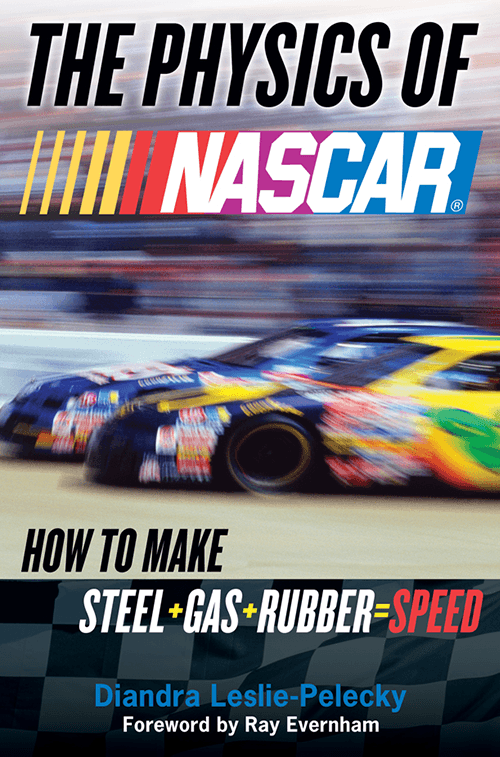Admit It
You’ve sat in front of the television (or at the track) and wondered why in the world your driver can’t make his way to the front of the pack.

Here’s your answer. The Physics of NASCAR® takes you from behind-the-scenes at top race shops to 190 mph hour on the race track to answer the question every NASCAR fan has asked at one time or another: Why isn’t my favorite driver winning?
From building cars to everything that has to happen in the garage before the driver even shows up, this book will give you an inside look at the science that make cars that win.
If you’ve ever wondered why tracks are banked, why racecars don’t have mufflers, how ‘bump drafting’ works, or what in the world ‘Let’s go up a pound on the right rear and add half a round of wedge’ means, this is a book you will not want to miss.
In addition to a better understanding of the technical side of NASCAR, you’ll also have the opportunity to meet the people whose passion for science and racing is evident every time cars get on a race track.
Reviews
“To understand what is happening on the track and in the garage [at the Daytona 500], you need…The Physics of Nascar.”
John Tierney, New York Times
In simple language, with sometimes funny descriptions, Leslie-Pelecky explains track and sway bars, wedge, and tire camber, how a “toed-in” car looks and handles. It may seem downright bizarre to explain oil viscosity by comparing engine oil flow to Dale Earnhardt Jr. dodging media in a crowded garage, but she makes it work.
The Physics of NASCAR is an “idiot’s guide” for those of us who have watched too many races to be dummies.
Andrew Giangola, NASCAR.COM
…one of the most intriguing and educational books ever written about the National Association for Stock Car Auto Racing. “The Physics of NASCAR” may be one of the most intellectually challenging books you’ve read in a while. That’s a good thing, because Leslie-Pelecky does a splendid job of balancing the hard-core scientific aspects of the sport (there are a lot of them) with the human side.
Mark Davis, Daytona Beach News-Journal
And anyone will appreciate the scenes in which she actually gets behind the wheel of a stock car, and finds her legs wobbling as she walks away afterwards.
Gregory Mone, Popular Science
The first part of the book deals with materials, and looks at how combustion, power and aerodynamics work together to maximize speed. But it’s the driver and his crew who win the race, and Leslie-Pelecky gets plenty of time with the men behind the machines, joining Ray Evernham’s crew to watch him race, and taking a turn behind the wheel herself. Along the way, the nanotech specialist becomes an unlikely racing fan; this fun physics primer should give any NASCAR aficionado a similar appreciation for science.
Publisher’s Weekly
What changes do we make during the race? Why are we making them? The Physics of NASCAR helps answer all of these questions. Reading it is a bit like being around a team working on winning. Read on and learn about the science of our sport, and the magic will come
Ray Evernham, winner of three NASCAR Cup championships as crew chief with Jeff Gordon
